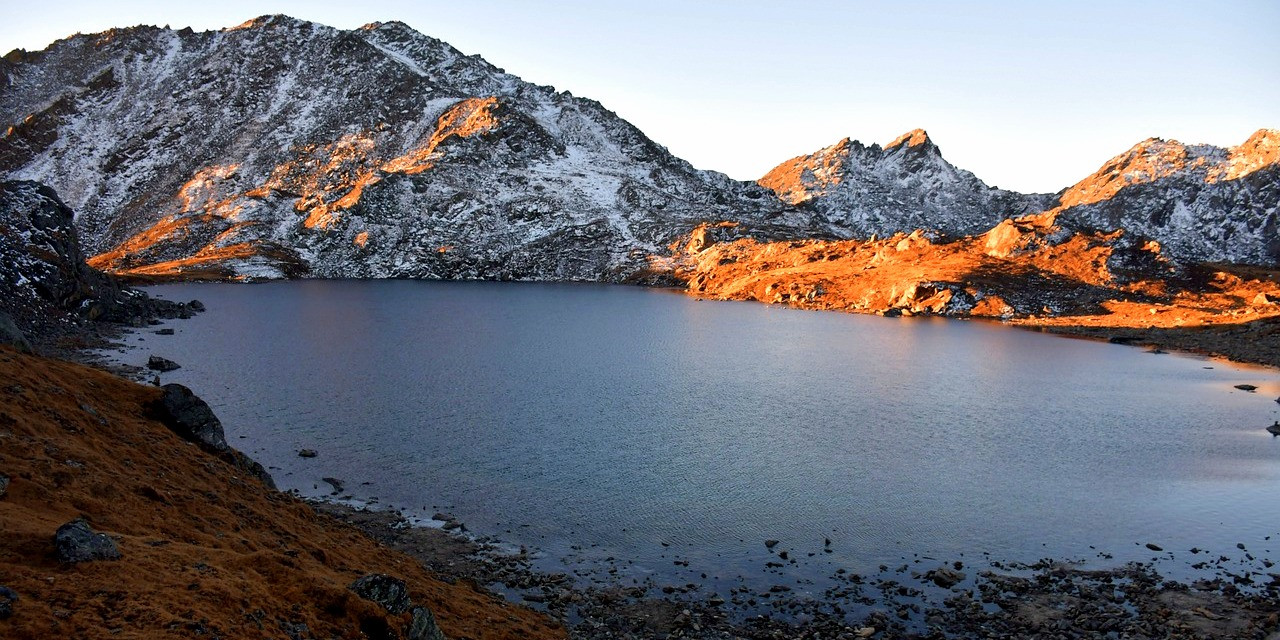Muktinath Temple
Muktinath Temple, situated at an altitude of 3,710 meters in the Mustang district of Nepal, is one of the most sacred pilgrimage sites for both Hindus and Buddhists. The name Muktinath is derived from the Sanskrit words 'Mukti' (salvation) and 'Nath' (lord), reflecting its significance as a place for achieving moksha or liberation.
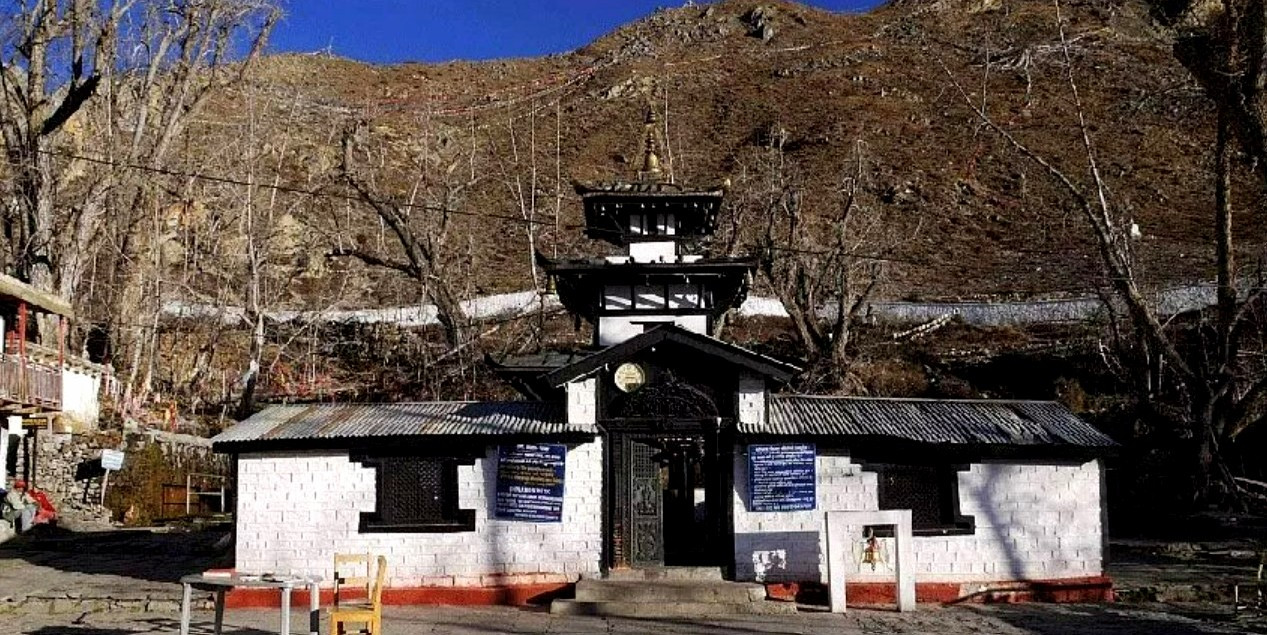
-
Historical and Spiritual Significance: Muktinath is a significant site in both Hindu and Buddhist traditions. For Hindus, it is considered one of the eight most sacred shrines, known as Svayam Vyakta Kshetras. For Buddhists, it is an important place of dakini (goddesses known as Sky Dancers in Tibetan Buddhism), symbolizing the element of air. The site is also linked to Guru Rinpoche, the founder of Tibetan Buddhism, who is believed to have meditated at this location.
-
Architectural and Natural Elements: The temple’s architecture is a unique blend of Hindu and Buddhist styles. The main shrine is a pagoda-shaped temple dedicated to Lord Vishnu. Surrounding the temple are 108 bull-faced spouts which channel the ice-cold water of the Kali Gandaki River. Pilgrims perform a ritual bath under these spouts, believed to cleanse the soul. Another fascinating feature is the eternal flame, called Jwala Mai, which burns continuously and is fueled by natural gas.
-
Pilgrimage and Festivals: Muktinath is a key stop in the famous Annapurna Circuit trek, attracting thousands of pilgrims and trekkers every year. The journey to Muktinath itself is considered a pilgrimage, with the route passing through diverse landscapes and offering spectacular views of the Himalayas. The temple is particularly busy during special Hindu festivals like Vijaya Dashami and Rama Navami.
-
Cultural and Community Aspects: The temple area is managed by the local Buddhist nuns and is a testament to the region's syncretic religious culture, where Hindu and Buddhist beliefs coexist harmoniously. Local communities, particularly the Bhotias from Mustang, view Muktinath as a culturally enriching site that boosts their economy through pilgrimage and tourism.
Muktinath Temple not only offers spiritual enrichment but also allows visitors to immerse themselves in the stunning natural beauty and rich cultural heritage of the Mustang region. It's a destination that provides peace and tranquility amidst the rugged beauty of the Himalayas.
Tengboche Monastery
Tengboche Monastery, also known as Dawa Choling Gompa, stands as a pivotal spiritual center in the Khumbu region of Nepal, perched at an elevation of 3,867 meters. Renowned for its majestic setting with panoramic views of the Himalayan giants including Mount Everest, Lhotse, and Ama Dablam, Tengboche is not just a monastery but a beacon of Tibetan Buddhist culture in the Everest area.
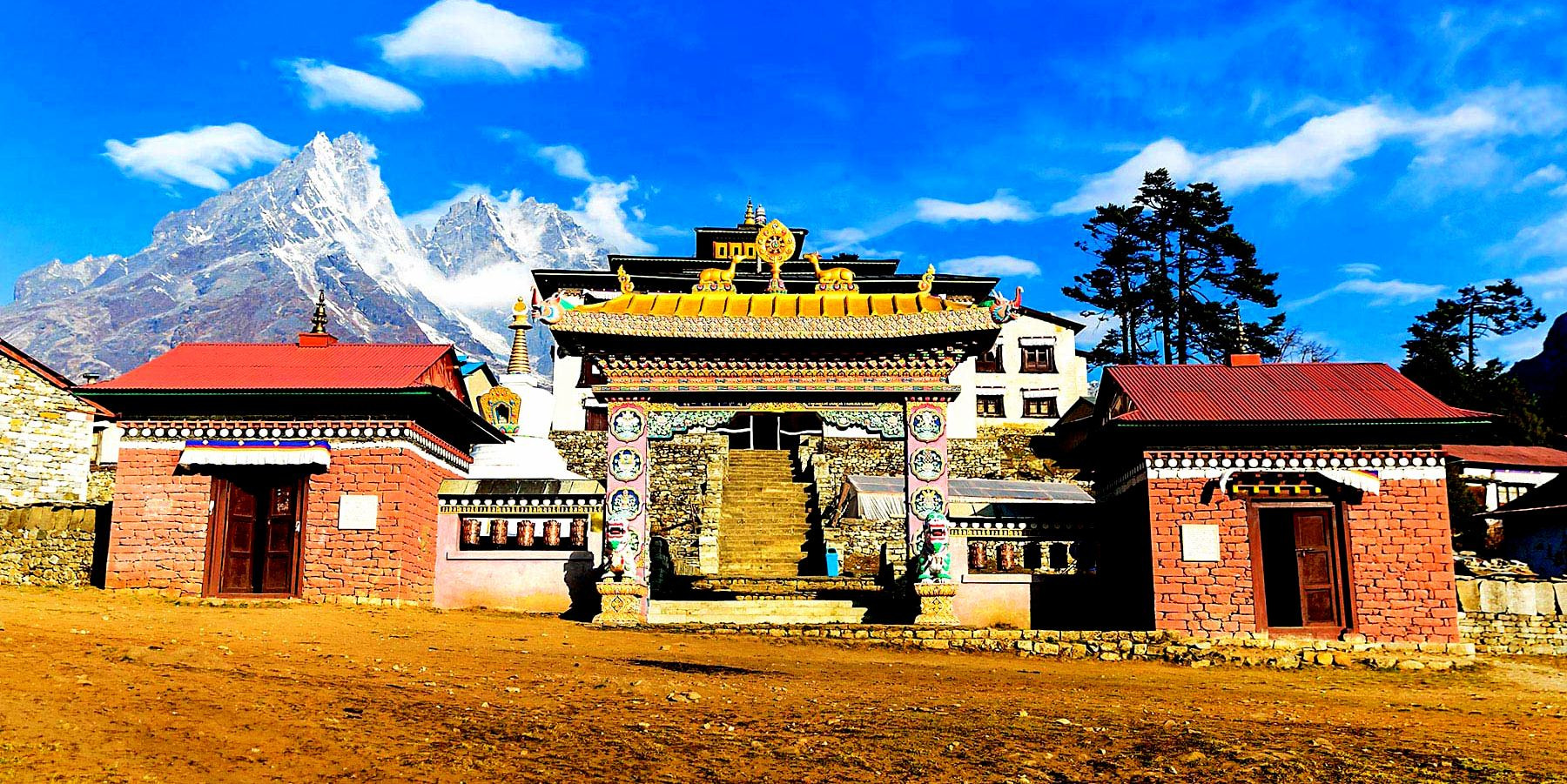
-
Historical Significance: Established in 1916 by Lama Gulu, Tengboche Monastery has been rebuilt several times due to damage by earthquakes and fires, the most recent being after the 1989 fire which required extensive renovation. It belongs to the Nyingma lineage of Tibetan Buddhism and serves as the largest gompa in the Khumbu region.
-
Architectural and Cultural Highlights: The monastery's architecture is a splendid example of Tibetan Buddhist style, featuring a large, colorful prayer hall, intricately decorated with murals and thangkas (Tibetan silk paintings), and statues of Buddha and other deities. The main prayer hall is used for daily ceremonies and is a place where monks engage in religious discourse and meditation.
-
Spiritual and Community Role: Tengboche Monastery plays a crucial role in the spiritual life of the Sherpa community. It is the religious center where young monks are trained in Buddhist practices and where major decisions regarding the community's spiritual life are made. The monastery also hosts the famous Mani Rimdu festival, a colorful event held annually in October or November. This festival features masked dances, prayers, and rituals that draw tourists and pilgrims alike, providing a deep insight into Sherpa culture and Buddhism.
-
Trekking and Tourism: As a key point on the route to Everest Base Camp, Tengboche is a favored stop for trekkers who are drawn not only by its spiritual aura but also by the natural beauty that surrounds it. The trek to Tengboche is considered moderate and offers one of the best ways to observe and participate in the region's cultural practices.
-
Environmental and Conservation Efforts: Tengboche is also involved in various environmental conservation efforts aimed at preserving the unique biodiversity of the Sagarmatha National Park. The monastery encourages sustainable practices among the local and visiting populations, emphasizing the Buddhist principle of living in harmony with nature.
Tengboche Monastery remains a jewel in the Himalayas, providing a serene and spiritual experience against the backdrop of some of the world's highest peaks. It stands not only as a place of worship but as a community center that fosters the cultural heritage and environmental stewardship of the Khumbu region.
Pathivara Temple
Pathivara Temple, situated in the Taplejung district of Eastern Nepal, is a highly revered shrine among both Hindu and Buddhist devotees. Perched at an elevation of approximately 3,794 meters, this sacred site is believed to be the abode of Goddess Pathivara, considered a manifestation of Goddess Durga.
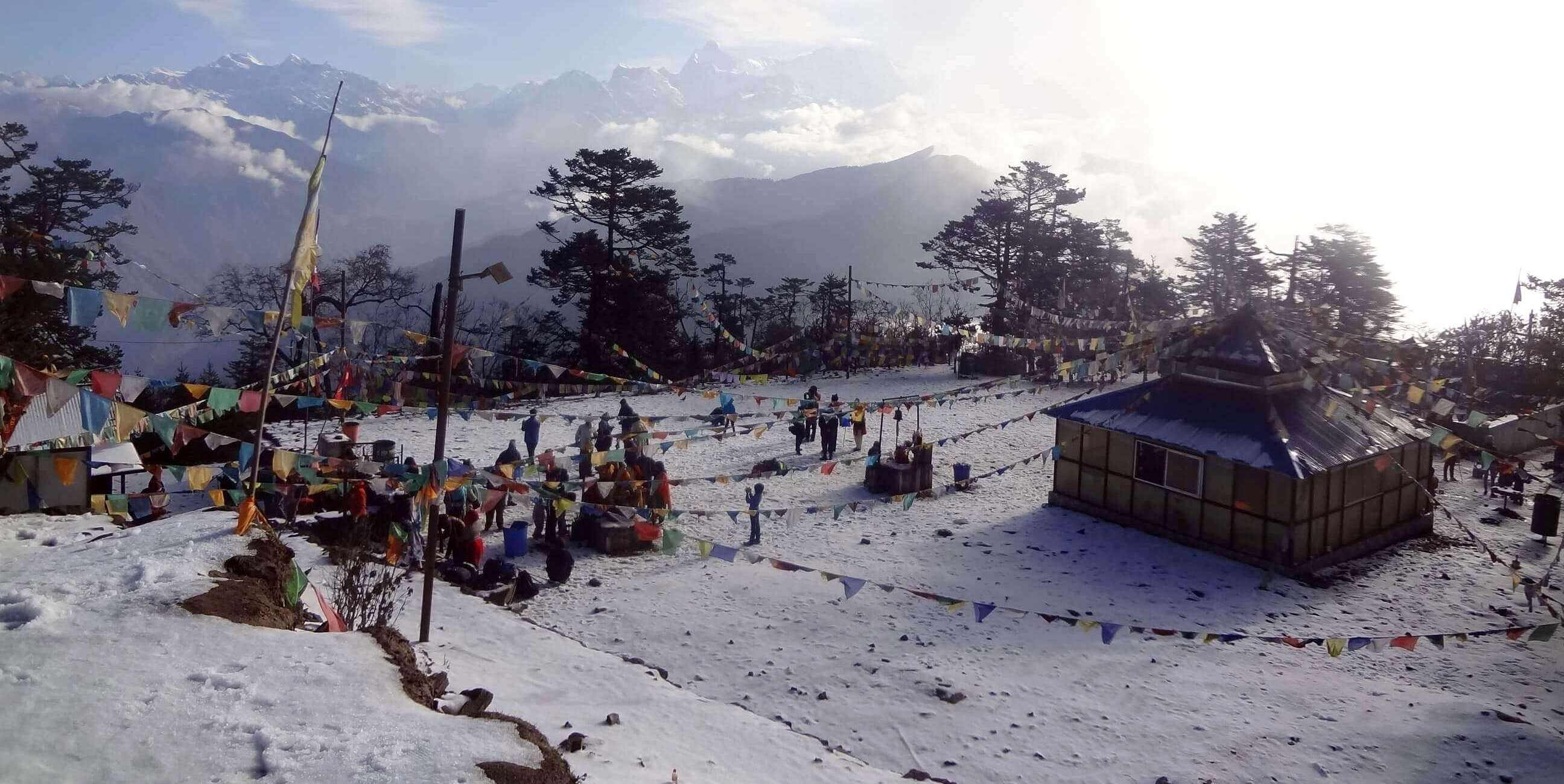
-
Spiritual and Cultural Significance: The temple holds immense religious significance, with devotees believing that Goddess Pathivara fulfills the wishes of those who make the arduous journey to seek her blessings. According to local lore, the goddess is known for her miraculous powers and is revered as a protector of the region. The temple is a key spiritual destination for pilgrims from Nepal, India, and other parts of the world, particularly worshippers from the Limbu community, who consider it one of their holiest sites.
-
Pilgrimage and Rituals: The pilgrimage to Pathivara is considered both a spiritual journey and a testament to one's devotion. Pilgrims offer animal sacrifices, gold, and silver as a way to please the goddess and receive her blessings. The trek to the temple provides a profound cultural immersion, as visitors can observe and participate in various rituals and practices that are integral to the local religious traditions.
-
Natural Beauty and Trekking Experience: The trek to Pathivara Temple is renowned not only for its spiritual importance but also for its scenic beauty. The route passes through diverse landscapes, including lush sub-tropical forests at the lower reaches, and alpine zones as one ascends higher. The area is rich in biodiversity, and trekkers may encounter various species of flora and fauna endemic to the region. The journey provides panoramic views of the surrounding mountains, enhancing the spiritual experience with breathtaking natural vistas.
-
Festivals and Celebrations: Major festivals at Pathivara Temple include significant Hindu occasions such as Dashain and Navaratri, during which the number of visitors increases dramatically. These festivals are marked by special rituals and vibrant celebrations, providing an excellent opportunity for cultural exchange and understanding.
-
Infrastructure and Accessibility: Access to Pathivara has improved over the years, with efforts from both the government and local communities. While there are basic facilities available for pilgrims and trekkers, the remote location and high altitude make the journey challenging yet rewarding. The temple can also be accessed via helicopter services, which are often used by those unable to undertake the trek.
Pathivara Temple is not just a destination for spiritual solace but also a place of stunning natural beauty and rich cultural heritage. It remains one of the most significant pilgrimage sites in the Himalayas, offering a unique blend of faith, tradition, and natural wonder.
Gosainkunda
Gosainkunda, also spelled Gosain Kunda, is a high-altitude lake located in the Rasuwa District of Nepal, within the Langtang National Park. This stunning alpine lake sits at an elevation of about 4,380 meters (14,370 feet) and is one of the most famous pilgrimage sites in Nepal. It holds immense spiritual significance for both Hindus and Buddhists.
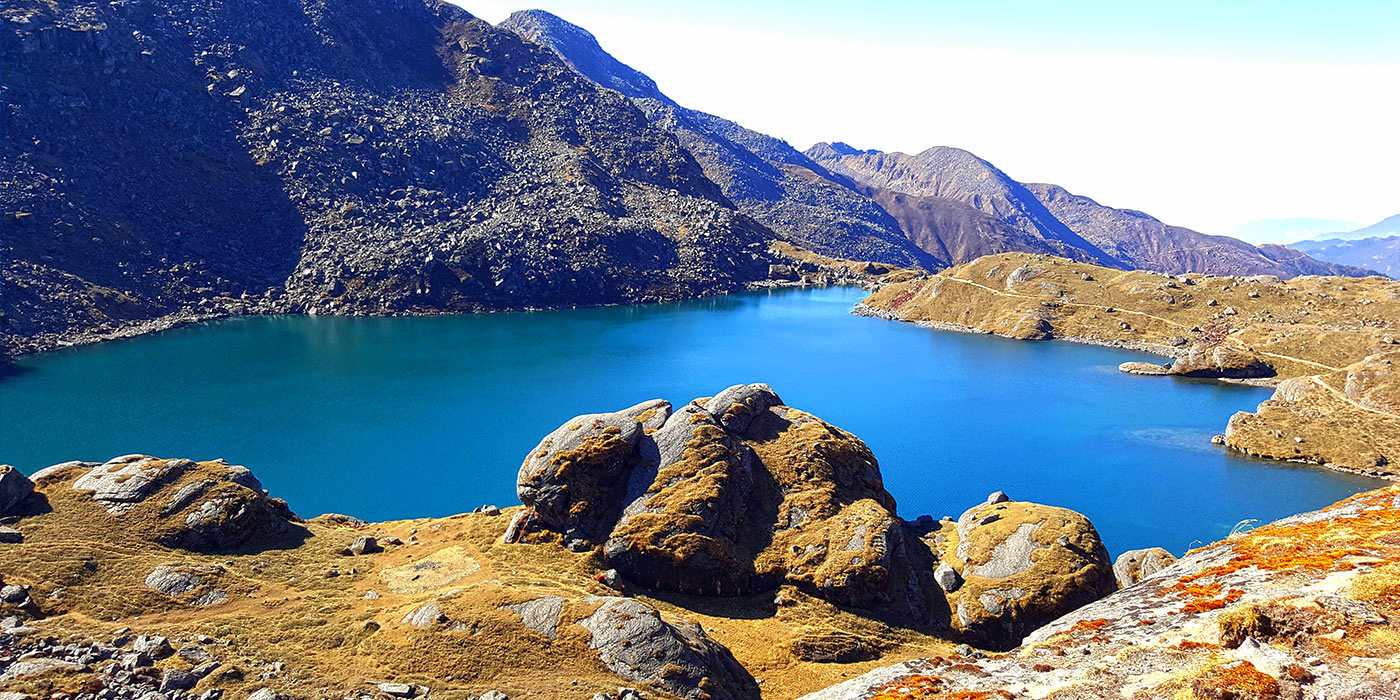
-
Spiritual Significance: Gosainkunda is considered sacred in Hindu mythology as it is believed to have been created by Lord Shiva. According to legend, after swallowing poison that threatened to destroy the world, Shiva needed to cool his burning throat. He struck the mountain with his trident (Trishul) to extract water, creating Gosainkunda. The lake is said to directly link to another famous holy site, Kailash, the abode of Lord Shiva, through a subterranean channel.
-
Pilgrimage and Festivals: The most significant time to visit Gosainkunda is during the Janai Purnima festival, which usually occurs in August. During this time, thousands of Hindu pilgrims from Nepal and India make the arduous trek up to the lake to bathe in its cold waters, believed to wash away sins and bring good fortune. This festival also coincides with the Raksha Bandhan festival, adding to the spiritual and festive atmosphere.
-
Natural Beauty and Trekking: The trek to Gosainkunda is one of the highlights of the Langtang trekking region, known for its stunning landscapes that include lush forests, rocky cliffs, and panoramic views of the Himalayas. The area around the lake features several other smaller lakes, each adding to the mystique and beauty of the area. The journey provides trekkers with an incredible blend of natural beauty, wildlife spotting opportunities, and a chance to experience local Tamang culture.
-
Environmental and Ecological Importance: Gosainkunda is also ecologically significant. The lake and its surrounding areas are part of the Langtang National Park, which is home to diverse flora and fauna. The region is a habitat for several endangered species, including the red panda and the Himalayan black bear. Conservation efforts are continually promoted to protect the fragile ecosystem of this high-altitude habitat.
-
Accessibility: While the trek to Gosainkunda can be challenging due to its altitude and rugged terrain, it is well-marked and can be navigated with or without guides. The trek typically starts from Dhunche or Syabrubesi, with options to extend the journey to other parts of the Langtang Valley or even connect to the Helambu trails, making it a versatile trekking option for adventurers seeking varied experiences.
Gosainkunda remains a site of extraordinary cultural richness and breathtaking natural beauty, attracting not only spiritual seekers and pilgrims but also trekkers and nature enthusiasts from around the world. Its profound cultural significance and stunning landscape make it a quintessential destination for anyone visiting Nepal.
Rules and Regulations for Religious Sites in the Himalayas of Nepal
When visiting religious sites in the Himalayas of Nepal, it's important to adhere to specific rules and regulations to ensure a respectful and safe experience for everyone. These guidelines help preserve the sanctity and cultural integrity of these sacred spaces. Here’s an overview of general rules and regulations you should follow:
-
Dress Appropriately: Modest dress is required at most religious sites. This typically means covering shoulders, chest, and legs. Men should wear long pants and shirts with sleeves, while women should avoid shorts and sleeveless tops, opting for long skirts or pants and covered shoulders. Some temples may also require visitors to remove hats and sunglasses.
-
Remove Shoes: It is customary to remove shoes before entering a temple or monastery. This practice respects the cleanliness and sanctity of the worship spaces. Shoe racks or designated areas are usually available near the entrance.
-
Photography Restrictions: Photography may be restricted or entirely forbidden inside the main worship areas of temples and monasteries. Always look for signs indicating photography rules or ask a guide or caretaker for permission before taking photos. This is particularly important during religious ceremonies or festivals.
-
Silence and Decorum: Maintain a quiet demeanor within the religious sites. Avoid loud conversations and turn off mobile phones or keep them on silent. These sites are places of worship and meditation, so it’s important to respect the peace and quiet.
-
Offerings and Donations: Handling offerings or donations can be sensitive. If you wish to make an offering, it is best to ask a local guide or the temple staff for the appropriate protocol. In many temples, there is a donation box for monetary contributions, which helps in the maintenance of the site.
-
Physical Contact: Avoid physical contact with monks, nuns, and other religious figures. In many cultures within Nepal, such contact, especially between opposite genders, can be considered inappropriate.
-
Consumption of Food and Beverages: Eating or drinking within the temple or monastery complexes is generally discouraged unless it is part of a specific ritual or you are explicitly invited to partake in communal meals.
-
Handling of Sacred Objects: Do not touch or handle any religious artifacts or decorations without permission. This includes prayer wheels, which should only be rotated in a clockwise direction, following the sun's path.
-
Environmental Care: Many religious sites are located in environmentally sensitive areas. It is crucial to avoid littering and to carry out all non-biodegradable waste. Be mindful of your environmental impact and respect any specific guidelines set by the site to preserve its natural setting.
-
Compliance with Local Customs: Each religious site may have its own set of specific customs or rules, influenced by local traditions and religious practices. It’s wise to observe and follow the lead of locals or seek guidance from your guide.
Following these rules and regulations not only ensures that you respect the local culture and religious practices but also enhances your experience by allowing a deeper understanding and appreciation of the spiritual and cultural richness of Nepal’s Himalayan region.
Tips for The Religious Sites in the Himalayas of Nepal
Visiting the religious sites in the Himalayas of Nepal can be a deeply enriching and transformative experience. Here are some tips to ensure a respectful, safe, and fulfilling journey to these sacred destinations:
-
Respect Local Customs and Traditions: Each religious site in Nepal has its own set of customs and traditions. It’s important to be respectful of these practices. Dress modestly, remove shoes where required, and ask permission before taking photographs, especially during ceremonies. Observing and participating in local traditions respectfully can enhance your understanding and experience.
-
Prepare for High Altitude: Many of these sites, such as Gosainkunda Lake and Muktinath Temple, are located at high altitudes. It’s essential to acclimatize properly to avoid altitude sickness. Take your time to ascend gradually, stay hydrated, and consider spending a few days at intermediate elevations before reaching your highest point.
-
Hire Local Guides: Hiring a local guide can enrich your trek with insights into the cultural and spiritual significance of the sites you visit. Guides can also assist with language barriers and help navigate the sometimes complex paths and local transport systems. This support is invaluable, especially in remote areas.
-
Be Prepared for Basic Facilities: While some popular sites like Muktinath and Tengboche Monastery might have developed amenities, many religious sites in the Himalayas have basic facilities, especially in terms of accommodation and toilets. Be prepared for simple conditions, and consider carrying essentials like a good sleeping bag, water purification tablets, and extra snacks.
-
Observe and Participate in Festivals If Possible: Visiting during major festivals can be a particularly magical experience, offering deeper insight into the religious and cultural fabric of Nepal. Plan your visit during events like Mani Rimdu at Tengboche Monastery or Janai Purnima at Gosainkunda to witness these vibrant celebrations.
-
Manage Your Environmental Impact: The Himalayan region is ecologically sensitive. Practice leave-no-trace principles: carry back all your waste, avoid single-use plastics, and use water sparingly. Supporting eco-friendly lodges and services can also contribute to sustainable tourism.
-
Keep Safety in Mind: Ensure you have adequate travel insurance that covers high-altitude trekking and medical evacuation if necessary. Stay informed about the weather conditions, and always have a plan for emergency communication, especially in remote areas where mobile signals can be unreliable.
-
Embrace the Spiritual Experience: Even if you’re not religious, approaching these sites with an open mind and heart can provide a profound sense of peace and spirituality. Take the time to meditate or simply sit quietly and soak in the atmosphere of these ancient and sacred places.
By following these tips, your visit to the religious sites in the Himalayas of Nepal can become a memorable journey that respects the local culture and environment while providing personal enrichment and spiritual growth.
Best Time to Visit The Religious Sites in the Himalayas of Nepal
Visiting religious sites in the Himalayas of Nepal can be an enriching experience, and choosing the right time to go can significantly enhance this experience. The best time to visit depends on a variety of factors, including weather conditions, festivals, and personal trekking preferences. Here’s a guide to help you plan your trip:
-
Pre-Monsoon (March to May): This period is one of the best times to visit religious sites in the Himalayas. The weather is generally clear with minimal precipitation, offering excellent visibility of the surrounding mountain landscapes. Temperatures are comfortably warm at lower altitudes and cool at higher elevations, which makes trekking to high-altitude sites like Muktinath and Gosainkunda more manageable. This season also sees fewer visitors compared to the post-monsoon months, providing a more solitary and reflective experience at these sacred sites.
-
Post-Monsoon (Late September to November): Post-monsoon, particularly October and November, is considered the peak season for trekking in Nepal due to the clear skies and stable weather conditions. This is also an ideal time for visiting religious sites, as the air is fresh and views of the snow-capped peaks are spectacular. Additionally, several important festivals, such as Dashain and Tihar, occur during this time, providing visitors with a unique opportunity to experience Nepal’s rich cultural and religious traditions in full swing.
-
Winter (December to February): Winter can be a challenging time to visit the higher-altitude religious sites due to heavy snow and cold temperatures, which may make some trails impassable. However, for lower altitude sites such as Manakamana Temple, winter visits can be quite pleasant with fewer crowds and serene snowy landscapes. Also, the Mani Rimdu festival at Tengboche Monastery typically occurs in November, sometimes extending into early December, offering a culturally rich experience.
-
Monsoon (June to early September): The monsoon season is generally considered the least favorable time to visit due to heavy rains, potential landslides, and poor visibility. However, this time of year brings lush green landscapes and vibrant life to the valleys. Pilgrimages during this period are less common, but for those who are prepared to face the rains, it can be a time of deep solitude and personal reflection at these spiritual sites.
-
Visiting During Festivals: If you're interested in cultural immersion, planning your visit to coincide with local festivals can be particularly rewarding. Festivals like Janai Purnima at Gosainkunda or the Mani Rimdu at Tengboche Monastery provide insights into the rituals, dances, and community gatherings that are integral to Nepalese religious life.
By choosing the right time to visit based on weather, festival schedules, and personal trekking comfort, you can have a deeply meaningful experience exploring the religious sites in the Himalayas of Nepal.
Visiting the religious sites in the Himalayas of Nepal is an enriching experience that combines spirituality, culture, and breathtaking natural beauty. Each site, from the serene Gosainkunda Lake to the vibrant Tengboche Monastery and the mystical Muktinath Temple, offers a unique glimpse into the soul of the Himalayas. These sacred places are not just centers of worship but also hubs of cultural and historical significance, deeply embedded in the local communities. By choosing the right time to visit, respecting local customs, and preparing for the high altitudes, travelers can have a truly profound experience. Such visits not only deepen one’s understanding of Nepal’s religious heritage but also support local economies and conservation efforts, making them meaningful and sustainable adventures. In essence, the religious sites in the Himalayas of Nepal provide unforgettable journeys that resonate with spiritual insights and cultural richness.
FAQs for The Religious Sites in the Himalayas of Nepal
Q: What are some of the most important religious sites in the Himalayas of Nepal?
A: Important religious sites include Muktinath Temple, significant for both Hindus and Buddhists; Tengboche Monastery, known for its beautiful views and Buddhist practices; Gosainkunda Lake, revered in Hindu mythology; Pathivara Temple, popular among both Hindu and Buddhist pilgrims; and Manakamana Temple, devoted to the Hindu Goddess Bhagwati and accessible by cable car.
Q: What is the best time to visit these religious sites?
A: The best times to visit are during the pre-monsoon season (March to May) and post-monsoon season (late September to November), which typically offer clearer weather and safer trekking conditions.
Q: Are there specific customs I should be aware of when visiting these sites?
A: Visitors should dress modestly, remove shoes before entering sacred areas, adhere to photography restrictions, and maintain quiet to respect the sanctity of the sites.
Q: Do I need a guide to visit these sites?
A: While not mandatory, having a local guide can enhance your visit by providing cultural and spiritual insights, assisting with navigation, and facilitating interactions with local communities.
Q: What should I bring on my visit to these high-altitude religious sites?
A: It's advisable to bring layered clothing, sturdy hiking boots, sun protection, a reusable water bottle, snacks, and possibly altitude sickness medication. If you wish to participate in temple activities, consider bringing appropriate offerings or donations.
Q: How do I respect the religious practices at these sites?
A: Participate in rituals only when invited, offer donations respectfully, and avoid touching sacred objects without permission. Mimicking the behavior of locals is a respectful approach.
Q: What are the facilities like at these religious sites?
A: Facilities can range from basic at more remote sites like Pathivara and Gosainkunda to more developed at places like Muktinath and Manakamana. Prepare for minimal amenities, especially in remote areas.
Q: Is it safe to travel to these religious sites?
A: Travel is generally safe, but some routes can be challenging. Always check local travel advisories, ensure you have adequate travel insurance, and consider your physical condition and the weather before traveling.
For the Nepal tour, please click here.
If you are looking for different kinds of Nepal Tours or Trekking Packages, feel free to contact us.
